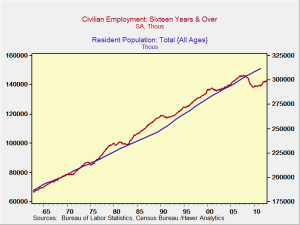Over the past couple of weeks, I have been looking at the day-to-day evolution of the fiscal cliff negotiations and spending quite a bit of time talking about trees. When I did the 2013 outlook series, I did a lot of forest gazing, trying to figure out the bigger picture for the economy and the markets. Now is probably a good time to combine the two and look at the bigger picture of the fiscal cliff and what it means for the U.S. government and economy.





